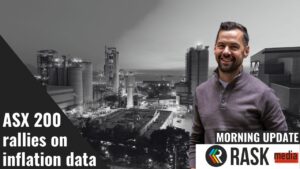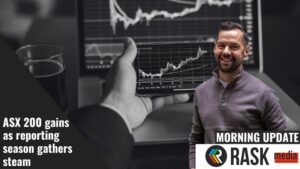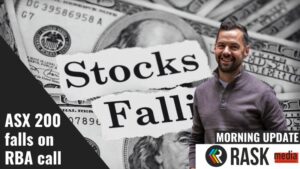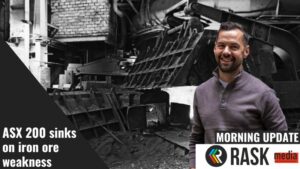The Golden Rules of Investing
In this short paper, we outline the key principles that determine the portfolio construction and investment decisions of Wattle Partners. Collating over decades, this paper should be seen as a work-in-progress, constantly under review in light of the ever-evolving nature of markets.
- Asset allocation is paramount
Most of the attention of investors and advisers alike naturally tends towards the ‘sexy’ part of investing; that being stock picking or investment selection. It is far more exciting and emotionally rewarding to ‘pick a winner’ than it is to be considering more complex issues like asset allocation.
That said, no shortage of academic research shows that asset allocation, not investment selection, is the biggest contributor to long-term compounding returns. Referring to making investments across the three key asset classes, cash, shares and bonds, asset allocation is estimated to have contributed as much as 90 per cent to long-term returns for most portfolios.
In retirement, asset allocation takes on a greater level of importance as investors must manage a finite pool of capital. In this context, the resilience of a portfolio is central to success, with resilience only possible by combining a range of assets that work alongside each other, countering the good and the bad of each asset.
Asset allocation is key to smoothing the volatility that comes with investing, reducing the likelihood of investors making emotional decisions. The regular and disciplined rebalancing between asset classes, which we recommend quarterly, has also proven to add significantly to returns over the long term.
- ‘Beta’ is free
While it may sound like a complex concept, ‘beta’ simply refers to the ‘index’ or ‘market’ return, that is reported every night on the news. The popularity of ‘Exchange Traded Funds or ‘ETFs’, and groups like Vanguard and iShares, has meant the cost of getting the ‘market’ return has never been lower.
There are few professions in the world where you can receive the average or ‘market’ return for free, but what this means is that investors should not pay high fees to simply gain the average market return. Knowing what you are buying when investing in ETFs, funds or any other asset class is key to ensuring you are building an ‘efficient’ portfolio of assets.
In a world where ‘beta’ is free, it is the selection of this ‘beta’ that becomes more important. That is, are you choosing Australian shares or international shares? The financial sector or the property sector? The Nasdaq or the Dow Jones? Likely even more important, is asking the question as to whether the ‘average’ market return is something you are comfortable with alone.
- ‘And’ not ‘or’
In the case of investing for retirement, we do not believe that the ‘average’ return is enough. Investing into a portfolio constructed solely on index-tracking investments means you are subject to the day-to-day whims of sharemarkets. That is, if the ASX drops 30 per cent, you lose 30 per cent, if it increased 20 per cent, you increase 20 per cent.
Given most retirees have a finite pool of capital, we believe the only way to achieve true diversification is to include both passive and actively managed investments. Active referring to those investments seeking to do better than the ‘average’. There are many factors outside of the economy that actually drive investment returns, and passive investing alone does not allow us to avoid or manage these factors and risks.
According to Standard & Poor’s, the majority of actively managed funds underperform their benchmarks over the long-term, however, they do offer one key benefit; used well, they can smooth the ride for investors. That is, if managed appropriately, actively managed funds tend to fall less than the market in periods of volatility and are able to outperform during periods of strength. The key of course, is making sure any fees you are paying are offering ‘bang for your buck’ and not just tracking the index.
- Be ‘agnostic’ to product
Too often investors and advisers get tied to one product or another, be that ETFs, managed funds, property, lending or the like. We believe that investments should be recommended based on the exposure they provide and their suitability to the prevailing market conditions, rather than inherent, existing biases.
We are agnostic to product, which is reflected in our incredibly broad ‘Approved Product List’, or ‘APL’, which outlines investments we are allowed to recommend to clients. Whenever a new idea is identified, the default is to seek a ‘passive’ or low-cost option and determine if this is appropriate. If not, we seek to understand what type of product is suited to that particular country, sector or asset class and advise accordingly.
- I + G = TR
Income plus Growth equals Total Return may well be the simplest but most forgotten number in investing. Too often we focus solely on the income being produced by an investment and forget about the real reason we are investing; to deliver a sustainable, growing income over the long-term.
The only way to achieve both a sustainable and growing income is to invest into companies and assets that are investing into themselves, or more broadly, ensure the capital base is growing. Central to our investment approach is the need for clients to separate the income produced by their investments from the money they spend on a daily basis. Dividends are inconsistent and paid only twice per year, meaning they are lumpy, with our advice focused on managing the ‘cash flow’ our clients require to meet their income needs.
History has shown that those companies paying the largest dividends are failing to invest into themselves and are ultimately found out to be dividend ‘traps’. In an environment of higher inflation, and with even retirees investing for at least 10 years, fighting the long-term impact of inflation on purchasing power is also central to our approach.
- Define the game you are playing
The explosion of content on the internet combined with the click-bait focus of many finance and investment media publications means it is easy to get caught up in the most popular investments and opportunities. Too often, however, we see the top performing funds or ETFs of the prior year getting the most inflows in the current year, almost always to the detriment of those investing.
The only way to avoid this emotion-driven decision making is to know the core objective of investing and stick to it. In the case of our clients, this is typically a base level of income, then a reasonable level of capital growth. If you are seeking a consistent income, you first port of call should be the lowest risk investments on offer; cash and term deposits. If it is not possible to achieve your income through these assets, then some risk is likely required.
At the centre of our approach is the idea that retired investors should not take more risk than they need to in the pursuit of returns.
- Things will go wrong
Be it around the BBQ or in a taxi when going on holiday, everyone has a great story about their investments. The issue with this, of course, is that most people only tell you about their positive experiences and tend to hide their worst. We know from experience that everything does not need to go right when investing for our clients to achieve all of their objectives.
Even the most successful fund managers in the world are wrong as often as 40 per cent of the time, so do not expect advisers to do any better or worse than this. What we believe our role is, however, is to minimise the number and severity of the many mistakes that every investor makes over their lifetime.
The return from a portfolio is simply the sum of its parts and we know that if every investment in a portfolio is performing well at the same time, then it is not truly diversified. Every year there will be mistakes, but above average returns are still achievable for those with the patience to stay invested.
- Do not bet the house on your ‘base case’:
A week rarely passed with so-called ‘expert’ economic and investment forecasters being proven wrong. The old quote says a forecast tells you more about the forecaster than about the future, and we agree with this in full. Central to our investment approach is the belief that things can and will go wrong, and that in order to ensure portfolios are able to navigate all conditions, we need to mitigate what we cannot and do not know.
By no means does this mean we are contrarian, rather we seek to consider the entire array of potential outcomes and stress test our portfolios against them, rebalancing accordingly. This is a central part of our portfolio construction process.
- Alternative assets
While not suited to everyone, ‘alternative assets’, are one of the few sources of truly non-correlated returns for investors. That is, they move in a different direction to the largest share and bond markets.
Defined as any asset that is not a share, bond or term deposits, alternative assets include everything from property and land to infrastructure and private company investments. Combining these assets with more volatile ‘public’ market investments like shares, offers the ability for true diversification.
We are strong proponents of investing into alternative assets; however, the benefits must be weighed against the costs to the investor, and their own objectives. That is, ‘alternative assets’ tend to be significantly more expensive than ‘beta’ and their different return potential are not suited to everyone. Furthermore, many alternative assets are only available to the wealthiest investors.
- Rebalancing and tactical allocations
The final rule is perhaps the most powerful, which once again returns to the role of ‘asset allocation’ and ‘rebalancing’. Given the increasing divergence of the global economy and markets, there are significant opportunities to improve returns by making ‘tactical’ or medium-term allocations to more attractive sectors, asset classes, countries and styles.
It is our view that every holding within a portfolio must be able to have a real impact on returns. Thus, we apply a number of simple rules, including the need for materiality of individual holdings exceeding 1 per cent, and the removal or topping up of any investments that fall to half of the average holding size of the portfolio.
Similarly, where portfolios perform strongly, we are advocates of regular rebalancing at the asset allocation and investment level. Rebalancing ensures the portfolio remains aligned with your risk profile, is able to navigate varying market conditions, but also ensures you are always ‘buying low and selling high’.
















